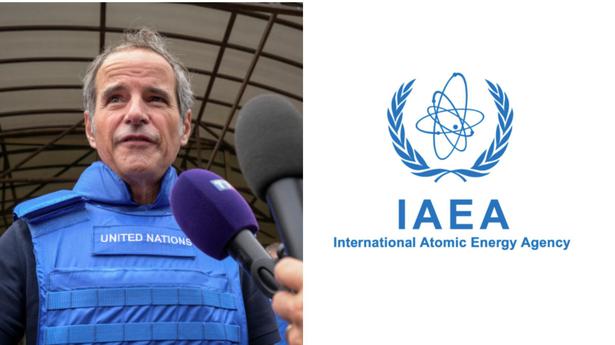
Explained | What is the IAEA, the agency seeking permanent presence at Ukraine’s Zaporizhzhia nuclear plant?
The Hindu
The nuclear watchdog braved shelling to visit the Russian-held Zaporizhzhia plant in Ukraine to assess the safety situation
The story so far: Inspectors of the International Atomic Energy Agency (IAEA) continued their survey on Friday, September 2 for the second day to assess the safety situation at the Zaporizhzhia nuclear power plant (NPP) on the banks of the Dnieper River near the Ukrainian town of Enerhodar. Europe’s largest nuclear plant was seized by Russian forces in March but continues to be operated by Ukrainian staff. It has recently become a subject of concern as the war spilt over into its premises, with both Russia and Ukraine blaming each other for the shelling and warning of a possible Chornobyl-type radiation disaster.
The IAEA mission, led by the agency’s Director General Rafael Grossi, braved gunfire in close proximity to the plant on Thursday to begin the survey and said that its inspectors were “not going anywhere” and would have a continued presence at the embattled plant.
The U.N. associated autonomous nuclear watchdog had been expressing willingness to visit the NPP since March but announced the mission’s visit last week after the nuclear plant was temporarily knocked offline amid reports of shelling in the area. The mission will now maintain a permanent presence at the plant with two of its inspectors saying back. Mr. Grossi said that the watchdog’s presence would prove to be a “game changer” for the safety situation at the power plant.
The IAEA is an autonomous intergovernmental body to promote safe, secure and peaceful nuclear technologies and has a relationship agreement with the United Nations. It was born on July 29, 1957, after the IAEA statute was approved by 81 countries in late 1956, at the height of the Cold War between the United States and the Soviet Union. Its creationwas inspired by the “Atoms for Peace” speech made by former U.S. President Dwight Eisenhower at the U.N. General Assembly in 1953 when he envisioned an organisation to promote peaceful and unifying uses of nuclear energy. The IAEA is entrusted with the task of upholding the principles of the Nuclear Non-Proliferation Treaty (NPT) of 1970.
Also read: IAEA | The ‘imperfect’ fight against proliferation
According to its statute, the IAEA’s objectives include controlling and promoting the atom, meaning the promotion of nuclear technology, nuclear security and safety, and of peaceful uses of nuclear energy in areas such as agriculture and health.
The atomic watchdog and its former Director General Mohamed ElBaradei were awarded the Nobel Peace Prize in 2005 for the agency’s work of “incalculable importance”, at a time when disarmament efforts appeared “deadlocked” and when there was a danger that nuclear arms would “spread both to states and to terrorist groups”.













